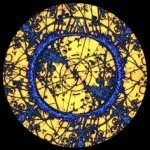
The top shows asperities between two objects before a load (force) is applied and the bottom shows after.
These ridges and valleys are shaped in a way so that they oppose the movement in the direction the force is being applied. This seems pretty intuitive, but then there are instances of smooth surfaces sticking together, such as gauge blocks or wafers.
I remember hearing about how gauge blocks could be “stuck” together and measured for more specific tolerances, but never understood why. Well the answer is a result of how they are made. Both gauge blocks and silicon wafers are polished very accurately for their uses, resulting in an extremely flat surface. The result is that the asperities are very limited leaving the contact between the two materials at a maximum.
Van der Waals forces then take into effect if limited material or residue is on either surface. To sum up the effect, atoms have electron clouds, and while we ideally picture them as uniform, they naturally are not. One side will have a slightly greater negative charge and the other will have a slightly greater positive. The surrounding atoms, will align themselves negative to positive resulting in a “sticky” force between them also known as London dispersion force. It is also important to mention each individual electron cloud’s orientation is momentary, but across all atoms there are enough places where it occurs for the resulting force to be noticeable on a macro scale.
This animation shows Van der Waals force in action.
So, while the rougher a surface becomes the more friction it can have, the same can be said for how smooth a surface is.
This is a very basic overview of what I learned, and I’m sure there is even more science behind these things the higher up you go, and I’ll see if I can update this, but consider this an overview.
I also found a very interesting related video which will be linked bellow.
As always thanks for reading – ThePeculiarParticle
- Read more...
- 0 comments
- 799 views

